As we repeatedly pointed out in early 2020, during the debate over the Virginia Clean Economy Act (VCEA), that legislation is far from perfect, but instead represented just a *start* – better than nothing, but not even close to being adequate – to the long process of transitioning Virginia from a fossil-fuel-heavy, costly and environmentally destructive energy economy. Now that the VCEA is law, we absolutely cannot and must not rest on our laurels, but should come back in 2021 with legislation aimed at building on it, accelerating its timelines, broadening its scope, etc.
Along those lines, a new analysis “released Wednesday by Rocky Mountain Institute and research firm Energy Innovation,” and reported on by Greentech Media, explains what Virginia legislators would have to do if they are really serious about adopting policies that move us off of fossil fuels and towards a path that’s consistent with limiting global warming (aka, heating) to 1.5 degrees centigrade. See below for more on that, including the needs for:
- “Rapid adoption of zero-emission cars and trucks“; note that, currently, “the largest source of emissions in Virginia is the transportation sector, which today makes up more half of net greenhouse gas emissions.”
- “In the transportation sector, this scenario uses a strong electric vehicle sales standard, requiring all new passenger cars sold to be electric by 2035, and all new trucks to be electric by 2045, aligned with California’s transportation sector policies and the multi-state Memorandum of Understanding on moving to zero emissions medium and heavy duty vehicles. “
- “[T]o put the state on a path to deep decarbonization in line with the requirements needed to limit global warming to 1.5°C, Virginia must accelerate electricity sector emissions reductions and implement climate policy in these other economic sectors.”
- “In the electricity sector, the scenario includes a carbon-free electricity standard similar to the VCEA, but covering the entire electricity sector (including municipal and cooperative utilities) and speeding up the transition to 100 percent clean power by 2035 (instead of 2045 to 2050 for different utilities). The offshore wind and storage requirements as well as the power plant closure requirements under the VCEA are also included; along with additional policies allowing for transmission system growth, more demand response, and additional storage to add valuable grid flexibility”
- “In the buildings sector, a sales standard requires all newly sold building equipment to be electric by 2030. This would shift gas space and water heating systems to all-electric heat pumps, which are already commercially available and common in many parts of the U.S. Strong efficiency standards (potentially state standards on new equipment sales, a utility rebate program, a “Zero-carbon electricity” statewide energy efficiency resource standard) further improve the efficiency of newly sold building equipment.”
- “To reduce energy-related emissions, the scenario requires industrial facilities to electrify all end-uses where possible, to switch to a zero-carbon fuel (in this case hydrogen) for all others by 2050, and for the hydrogen to be produced through a zero-carbon process known as electrolysis. Policies promoting more efficient use of industrial materials and improved industrial energy efficiency achieve additional reductions in this sector.”
- “Reducing leaks of natural gas throughout the supply system and from the waste management and coal mining sectors”
- “Better land management to capture more carbon”
- “Altogether, this package of policies would reduce emissions by 63 percent below 2005 levels by 2030 and achieve net-zero emissions before 2050, putting Virginia on a path broadly consistent with limiting warming to 1.5°C.”
- “By 2050, this scenario is projected to generate more than 12,000 job-years, while increasing Virginia’s GDP by more than $3.5 billion per year.” Also, “Moving away from fossil fuels also improves air quality by reducing emissions of particulate matter (PM) and other pollutants that can create PM, and cause adverse health impacts. For example, this scenario avoids more than 16,000 asthma attacks per year by 2050.”
That’s a lot, but it all would benefit our economy and our citizens, so why not do it? As Virginia clean energy expert Ivy Main put it to me a few minutes ago:
“The lesson is that you have to do everything, which is not really news. We always knew the VCEA was only a start. We have to speed up electric sector decarbonization and bring in the co-ops and close the loopholes; we have to ramp up distributed generation solar; we have to tackle buildings (which we know how to do but will take way too long) and the transportation sector (which isn’t easy because it isn’t just vehicle electrification, we have to redesign our communities), and then we still have industry and agriculture and embedded carbon in all our stuff.”
Well said, as always, by Ivy Main. So…which legislators are drafting bills to address all of this? And if they aren’t doing so, why not?
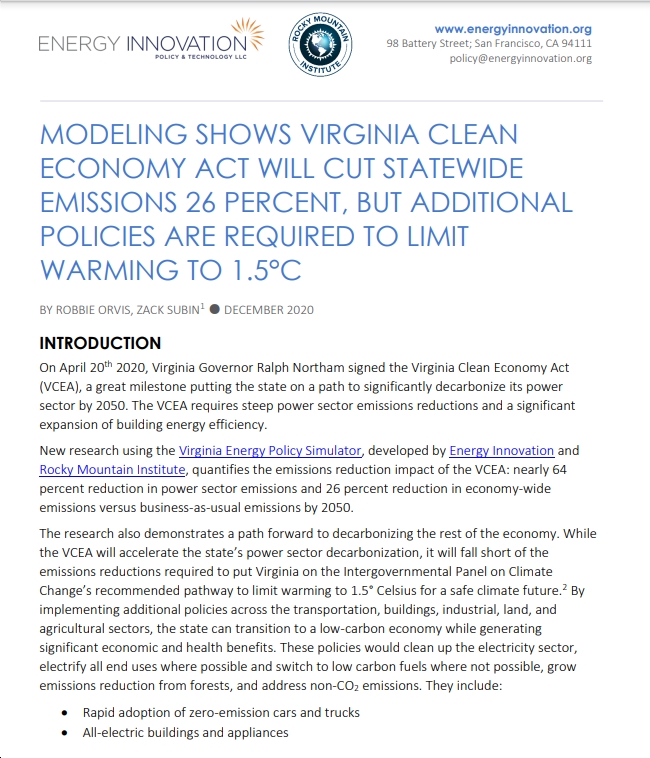
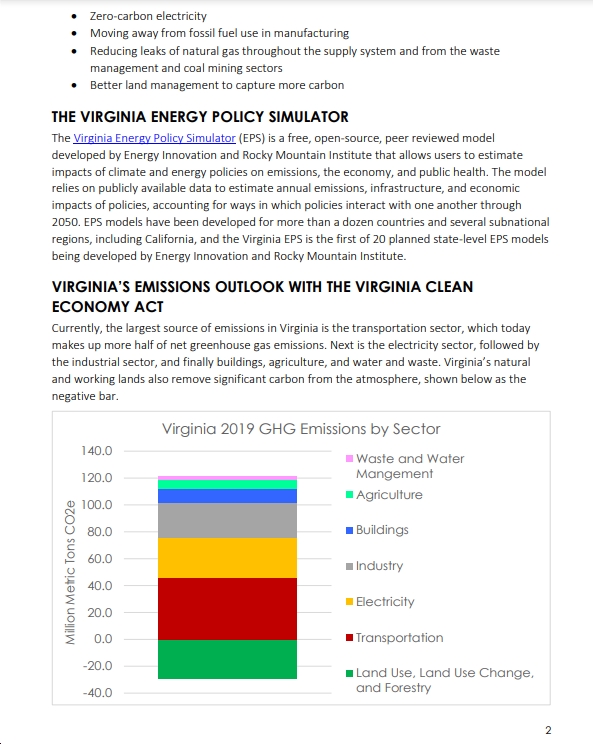

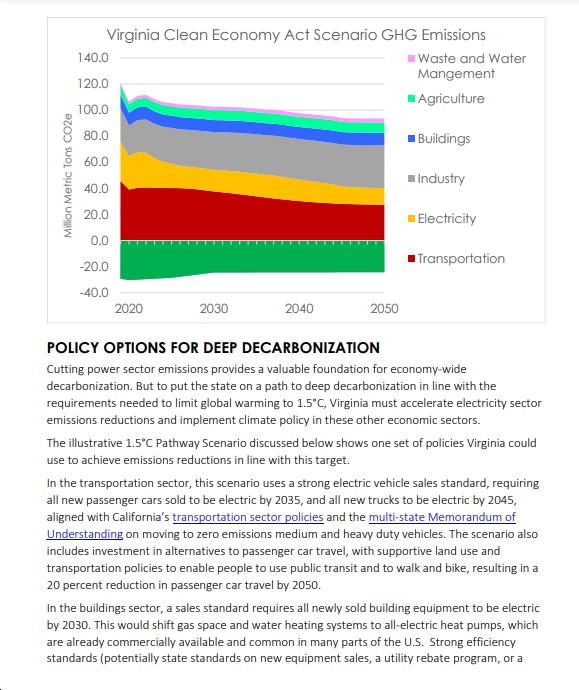

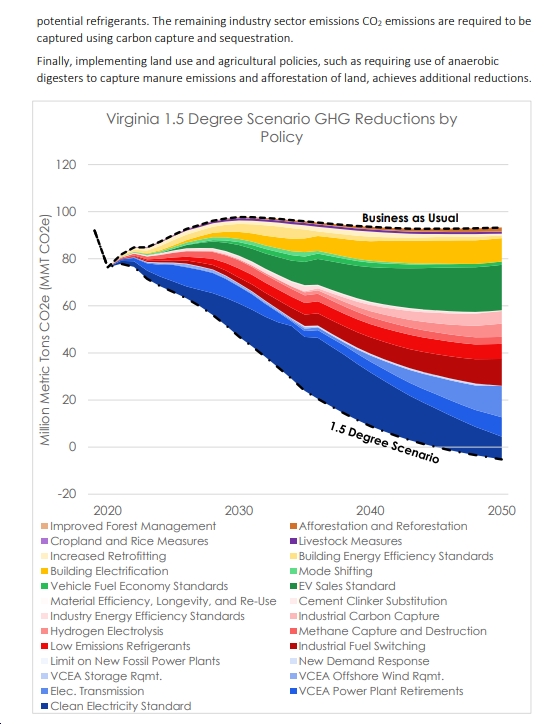
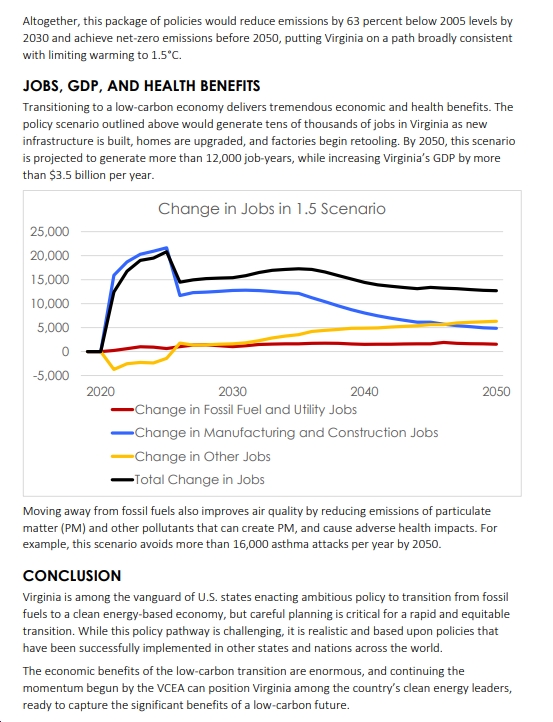




![Monday News: Trump’s Lunacy Pushes China, Russia, India, etc. Together; “Happy Labor Day. Donald Trump and Elon Musk Are Screwing Workers.”; “Where is the [media’s] intense focus on Trump’s failing health?”; ““Trump says he is not a dictator. Isn’t he?”](https://bluevirginia.us/wp-content/uploads/2025/09/montage0901-238x178.jpg)









